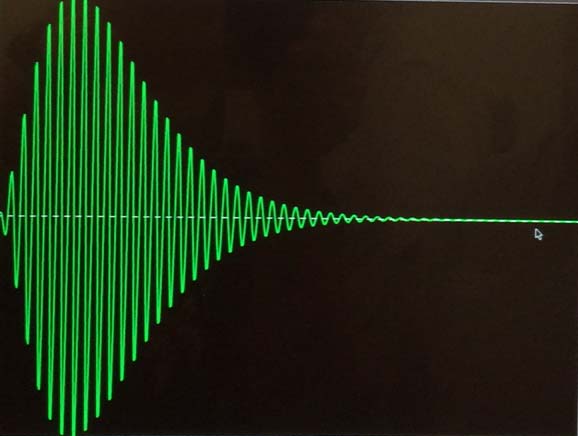Alternative PNT
At one time, GPS was expected to supplant a wide range of navigation technologies in the world’s positioning, navigation, and timing (PNT) portfolio. But an unexpected thing happened along the way.
By Inside GNSSAt one time, GPS was expected to supplant a wide range of navigation technologies in the world’s positioning, navigation, and timing (PNT) portfolio. But an unexpected thing happened along the way.
By Inside GNSS
A Federal Register notice published yesterday (August 18, 2015) seeking comment on plans to shut down a large portion of the Nationwide Differential GPS (NDGPS) network marks the effective end of a program that spurred a hard-fought controversy in the era of Selective Availability (SA).
By Inside GNSS U.S. Representative John Garamendi. U.S. Publishing Office photo
U.S. Representative John Garamendi. U.S. Publishing Office photoA quintet of well-placed lawmakers, tired of federal dawdling, are prepared to make the Pentagon responsible for building and maintaining eLoran as a backup system for GPS. The move could come by the end of the year, possibly through language attached to a must-pass bill.
Leading the bi-partisan charge are Duncan Hunter, R-California, chairman of the House Transportation and Infrastructure Committee, and the subcommittee’s ranking member John Garamendi, D-California.
By Inside GNSS At the European Economic and Social Committee’s Space & Society Conference, from left, Daniel Calleja Crespo, director general of European Commission’s DG Growth; EESC Space and Society Project Coordinator Edgardo Maria Iozia, and Giulio Bartolani di Montauto, European Space Agency’s Brussels office.
At the European Economic and Social Committee’s Space & Society Conference, from left, Daniel Calleja Crespo, director general of European Commission’s DG Growth; EESC Space and Society Project Coordinator Edgardo Maria Iozia, and Giulio Bartolani di Montauto, European Space Agency’s Brussels office.Reporting from Brussels last year, we explained that the then–brand new EU GNSS Regulation had effectively put to bed years of wrangling over who does what in Europe’s GNSS programs. But the issue reared its head again in Brussels recently, in a highly charged discussion hosted by the European Economic and Social Committee (EESC).
By Peter Gutierrez Aerial view of Boulder in October
Aerial view of Boulder in OctoberThe tenth meeting of the International Committee on GNSS (ICG) will take place in Boulder, Colorado from November 1 through 6 2015. It will be hosted by the United States and organized by University Corporation for Atmospheric Research (UCAR) on behalf of the U.S. State Department.
It will take place at UCAR headquarters on the Center Green Campus in Boulder.
By Inside GNSSThe availability of several GNSSes promises advanced positioning, navigation, and timing services with higher availability and improved accuracy. According to a European GNSS Agency (GSA) market study, nearly 60 percent of receivers, chipsets, and modules already support at least two GNSS constellations, showing that multi-constellation is becoming a standard feature across all market segments. That development brings up questions of law and regulation that require careful handling by GNSS manufacturers, service providers, and policy makers.
By Ingo Baumann eLoran signal
eLoran signalWith worries mounting about jamming and other disruptions of GPS signals, officials took a step Friday (June 19, 2015) toward possibly establishing a backup for satellite navigation users in the United States.
By Inside GNSS
When the nation’s top GPS advisors meet next month they will announce their new chairman — a former defense official, welcome four other new members, and begin with a freshly renewed charter.
By Inside GNSSOne of the first feature articles I wrote as a newly minted GNSS magazine editor 26 years ago was about an advanced rail traffic management system based on GPS that Burlington Northern, with the help of Rockwell Collins, had designed and implemented.
By Inside GNSS
The 2015 edition of the European Navigation Conference (ENC) in Bordeaux last week found the continent’s GNSS community leaving troubles behind and looking to the future, where the world’s dependence on GNSS is greater, the risks higher, and the potential profits ever more tantalizing.
Speaking at the opening session dedicated to “the impact of GNSS on the economic sector,” Topos Cluster President Florence Ghiron answered the question in the simplest of terms: “We expect the GNSS market to grow and to include more and more industrial sectors.”

The Coast Guard is poised to release a new cybersecurity strategy that includes a resilient position and navigation capability.
The new strategy, which is reportedly due to be announced any day, was previewed by Vice Adm. Charles Michel, the Coast Guards’ deputy commandant for operations, at a maritime cyber security conference in early March.
By Inside GNSS
Four leading lawmakers, apparently impatient with the Obama Administration’s less-than-urgent approach to assuring availability of critical navigation and timing resources, have sponsored a bill mandating the Department of Defense institute a backup for the Global Positioning System.
If approved, the National Positioning, Navigation, and Timing Resilience and Security Act of 2015 (H.R. 1678) would give the U.S. secretary of defense three years to establish, an alternative, land-based source for positioning, navigation, and timing (PNT) data.
By Inside GNSSThe European GNSS Agency (GSA) unveiled its latest GNSS Market Report today (March 25, 2015) at the Munich Satellite Navigation Summit in Germany.
The fourth and most comprehensive in a series of GSA studies, the 80-page report describes current and projected GNSS receiver sales by volume and value and highlights market opportunities, technology trends, and future developments of GNSS.
By Inside GNSS